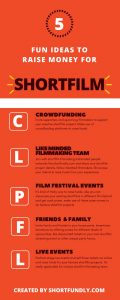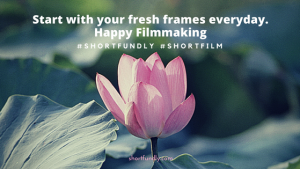As a short-film maker, finding funds is not the easiest thing in the world. Not that an artist trying to make it into the feature length cinema has it any easy; but if you’re into the industry, you have a very commercial audience paying hefty sums and huge studios and heavy pockets putting their name on your film. Unfortunately, the Audience for a short-film is still growing. Implication being, that it’s not an audience that can be catered to exclusively as of now.
That doesn’t mean that it doesn’t have an audience at all. Thanks to YouTube, the Ultimate platform for all kind of content. Between supporting content like make-up tutorials to let’s play videos; YouTube has created a huge audience for short-film makers too. A huge part of the online community very actively reviews and celebrates the content created in these short films.
But I digress; it still doesn’t solve the main problem: Money. It’s no secret that even a minor production of a 20 minute (or shorter) short film needs a rather hefty amount of money. An artist trying to make a short film will at least need a camera and a lot of time invested into the project; and none of those things are cheap.

IF the short-film maker in question managed to get the money from investors, business-owners, relatives and patrons; it is at high risk of becoming less of an art form and more of a product. The film-maker can lose the control of the process of making the film to start with. The worst case scenario I can imagine is the film-maker completely losing control over the content of the film. Censorship rooting from the producer’s own beliefs or even propaganda rooting from producer’s own belief is extremely plausible with these cases.
Have I painted too bleak a picture? Have I pointed out how morally dicey a capitalist world can be? Well, don’t you worry; this is not a horror story. This, like todays pop-culture would insist, is a super hero story. And now, with no further a-do, please welcome your super-hero: Crowd – funding. A hero who’s taken a rebirth in today’s digital world.

The last decade has been extremely helpful to both the audience and the film-maker in terms of arranging funds for the kind of short films the artist wants to create and the kind of short films their audience wants to watch. Provided that you can pitch your idea to a huge audience, or have work that can act as a sample, it’s possible for you to raise a reasonable amount of money to make more content and explore more possibilities with your work. Today’s world of the social Media has only made things better when it comes to supporting an artist you like. In a world of 8 billion people where at least a billion are active on FaceBook alone (estimated, Google 2017), Promoting content and asking for support to create is an extremely regular thing. The most popular ones today include Patreon; the website found in May 2013 for content creators to create their own subscription content service.

Probably the biggest advantage of crowd-funded short films is that it guarantees artistic liberty. The only reason an individual or a group of individuals would support a form of art is if they actually like what the artist has to offer; ensuring that the artist has the freedom to say what he wants to say. I wouldn’t say that crowd-funded money comes no strings attached; but it’s a much milder risk. A macro investment from a singular investor is quantifiably more risky and is more or less is at risk of coming with restrictions whereas a micro investment from a couple thousands has just accountability attached to it.




I know I’m making it sound too simple and I know there can be 9,99,999 problems even when you’re trying to raise money through here and the picture is more grey than it is black and white and yadayadaya; but it’s a way out. Problems like having much lesser money raised than say a major production house, or very little assurance of constant funds do exist. Those problems are just risks that come with the package of being an indie artist. No body’s really happy about how these things work, and I personally believe these problems can be dealt with sooner or later. The dream of an artist (ideally) is to cater to their audience; and crowd-funding is the best trick in the book to achieve the same.
Join creative filmmakers platform – shortfundly now.










